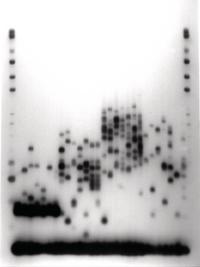Genetic diagnosis of myotonic dystrophy

The results of genetic diagnoses can have a total impact on people's lives. These diagnoses detect disease-related mutations. This allows knowing before the symptoms appear the risk of having a certain genetic disease and developing plans for the future.
In Gipuzkoa, the usual genetic diagnoses are performed in the Genetics Unit of Donostia Hospital. When the doctor diagnoses a genetic disease, he redirects the patient to the Genetics Unit. There they detect the mutations that cause the disease and, when necessary, analyze the patient's relatives.
A type 1 myotonic dystrophy is diagnosed within this unit. It is the most common muscular dystrophy in adults and is most common in Gipuzkoa. In fact, although the average prevalence is 1/8,000, in Gipuzkoa it is 1/3,000, where all cases are due to an old mutation.
There are many variants of the disease, since it does not produce any symptoms until it causes death in the newborn. However, genetic diagnosis is simple, economical and completely accurate, as it detects lighter cases and even without symptoms. Thus, due to prenatal diagnosis and good genetic advice, since 1990 there has been no case of variation that causes death in the newborn.
In addition to the diagnosis of the disease, Donostia Hospital conducts an investigation. Now the sperm mutation of males with disease is being studied, which, by not appearing the same way in all cells, want to know what relationship there is between the form that appears in their child and the variety that their children inherit. The head of the research is Ana Mª Cobo, genetics interviewed in September in the magazine. It should be noted that the study described in the interview was also carried out in the Genetics Unit of this hospital.
Buletina
Bidali zure helbide elektronikoa eta jaso asteroko buletina zure sarrera-ontzian











